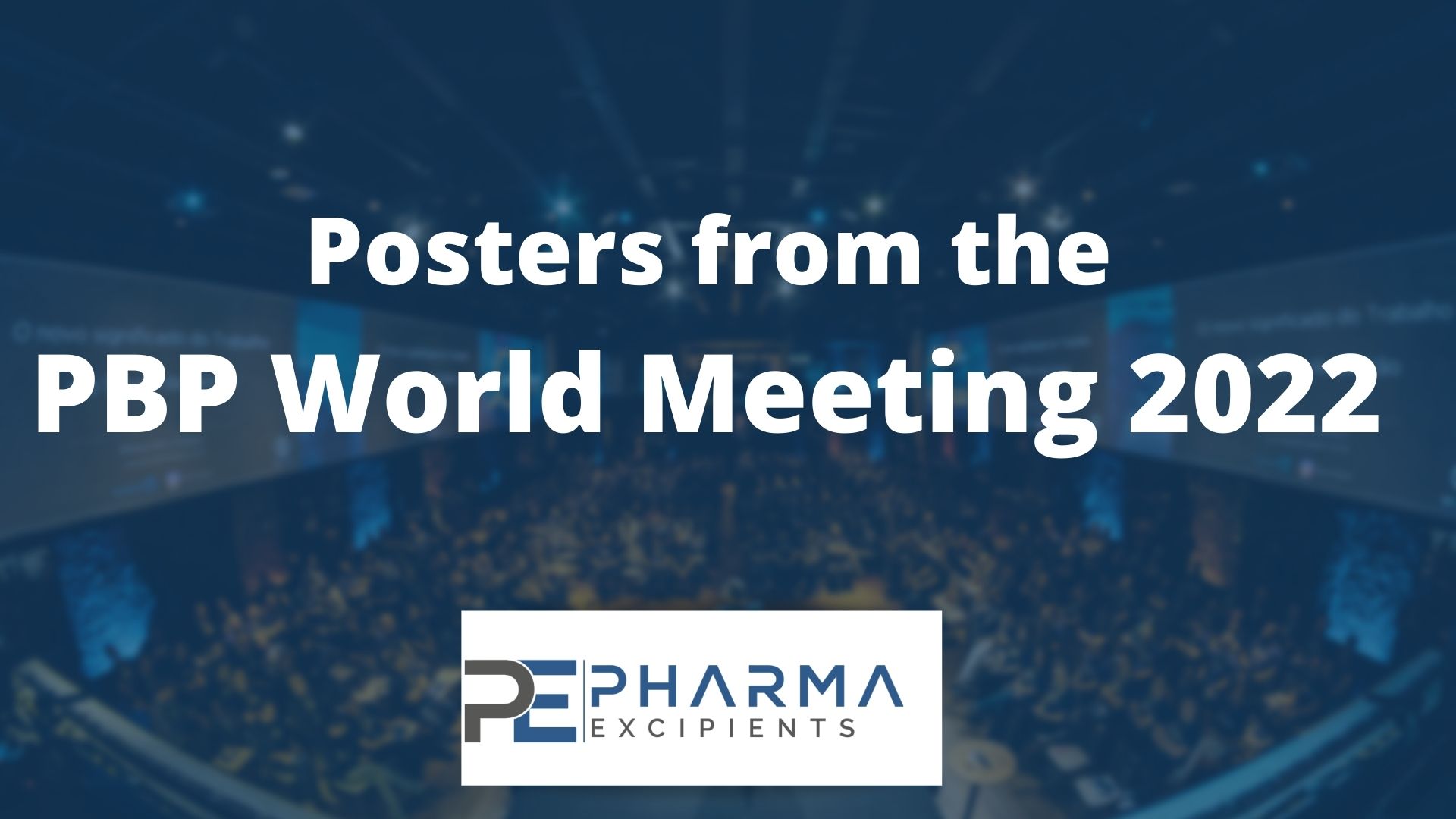Optimization of a film coating formulation for high solid content application suitable for continuous manufacturing

The 12th APV PBP World Meeting took place from 28 – 31 March 2022 in Rotterdam. There was a poster section at the event where really interesting scientific posters were presented. Therefore we asked the presenting scientists if we could share their work in addition online with the Pharma Excipients community.
As many scientists send us their posters we already showed and will show several posters of the PBP Poster Session stepwise over the next weeks.
The next poster in our series was presented by Sabrina Kreß, Dr. Raphael Janousek, Dr. Rainer Bastian, Bernd Grabherr and Dr. Matthias Kruse:
(click on the poster to enlarge it)

Download the poster as PDF here: BIOGRUND Continuous Coating DRIAM . AP PRO
Introduction
With regard to continuous manufacturing (CM) of solid dosage forms, such as the tablet, the continuous film coating process plays an ever-growing role. Supported by actions of the US Food and Drug Administration (FDA) to introduce process analytical technology (PAT) and thus, generation of continuous process data, end-to-end monitoring of processes became possible [1] [2] [3]. At the same time, advances in the development of aqueous film coating systems led to significant improvements in process times and film tablet properties [4]. Due to the latter advances and the introduction of PAT, CM is expected to continue to grow in importance in the pharmaceutical industry.
At the end of the 20th century, pharmaceutical companies started to use Ready-to-Use (R2U) film coating formulations to exchange complex in-house formulations, which contain multiple raw materials like the film-forming polymer as well as auxiliaries, such as plasticizers, fillers, pigments or functional agents [5]. Due to the high degree of specialisation of companies producing such R2U formulations, new film coatings were developed that were specifically invented for continuous coating. Biogrund, as one of the leading companies in R2U premises for the pharmaceutical industry specifically developed AquaPolish® PRO to meet those needs. AquaPolish® PRO is a film coating with immediate release and moisture protection, which protects the core of the solid dosage form and thus, the active ingredient from external environmental influences. Likewise, due to the low stickiness of the film, a very smooth surface can be achieved, which facilitates swallowing of the tablet [7] and ultimately increases patient compliance.
AquaPolish® PRO is based Kollicoat® Protect, which mainly consists of a polyvinyl alcohol (PVA)/polyethylene glycol (PEG) graft copolymer. The main feature of this formulation is that due to the low viscosity of the polymer, a high solid content (25-30%) of the coating suspension can be used [8]. Since a higher solid content at a constant spray rate shortens the process time, formulations with lower viscosities are a clearly advantage for continuous coating processes and hence, increased throughput [9]. In contrast, as a matter of the high viscosity, conventional film coating formulations – which often consist of PVA as the film-forming polymer – are most times applied with a solid content that should not exceed 15-20 [10].
The aim of this study was the optimization of an existing AquaPolish® PRO film coating formulation by means of an elaborated test plan – based on a Quality-by-Design (QbD) approach.
Materials and Methods
Kollicoat® protect was sourced from BASF SE and PVA from Japan Vam & Pocal Co. Ltd. Talc was purchased from Imerys Talc Italy S.p.A., titanium dioxide from Kronos International Inc., stearic acid from Peter Greven Nederland C.V. and PEG 6,000 from Clariant Produkte Deutschland GmbH. Placebo tablets were coated using AquaPolish® P white 619.03 PRO and AquaPolish® P white 610.26 PVA at 3% weight gain (wg). Optimal film coating parameters were determined using a Solidlab 1 (Hüttlin GmbH (Syntegon); Schopfheim, Germany) batch coater (see Table 1).
The tablets were evaluated in terms of general surface texture and gloss. Furthermore, the AquaPolish® PRO and AquaPolish® PVA formulations were compared in terms of viscosity at different solid content levels. Afterwards, the optimized film coating parameters were transferred to a DRIACONTI-T pharma (Driam Anlagenbau GmbH; Eriskirch, Germany) in batch mode and later on scaled into continuous mode (see Table 1). This approach was possible due to the unique setup of the DRIACONTI-T pharma 450/3, which has three consecutive coating chambers that can be used individually (batch mode) or sequentially used as mini batches for continuous mode (see Figure 1). The tablet surface was again analyzed using stereomicroscope (S9i Leica Microsystems GmbH; Wetzlar, Germany) images and a PICOGLOSS 560 MC-X glossmeter (ERICHSEN GmbH & Co. KG; Hemer, Germany). In addition, an optimized AquaPolish® PRO formulation (AquaPolish® P white 610.38 PRO) was developed and handled in a similar manner.
Authors
Sabrina Kreß, Hochschule Fresenius University of Applied Sciences, Idstein, Germany / Dr. Raphael Janousek, BIOGRUND GmbH / Dr. Rainer Bastian, Bernd Grabherr, Dr. Matthias Kruse, DRIAM Anlagenbau GmbH, Eriskirch, Germany
Are you interested in all other posters from the PBP World Meeting 2022 which we already published? Have a look here


